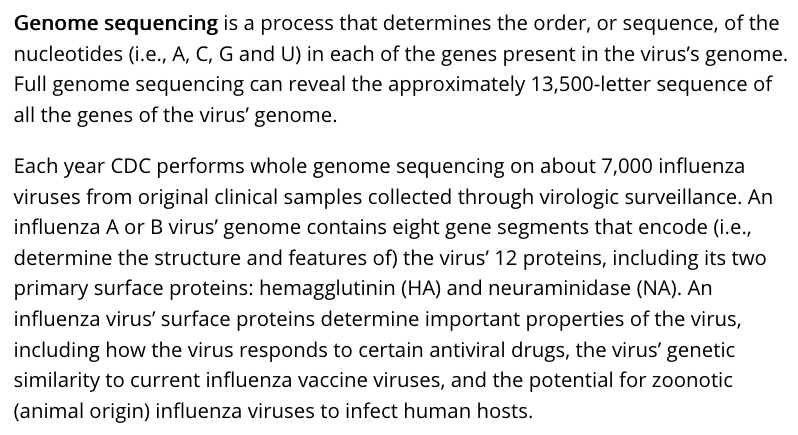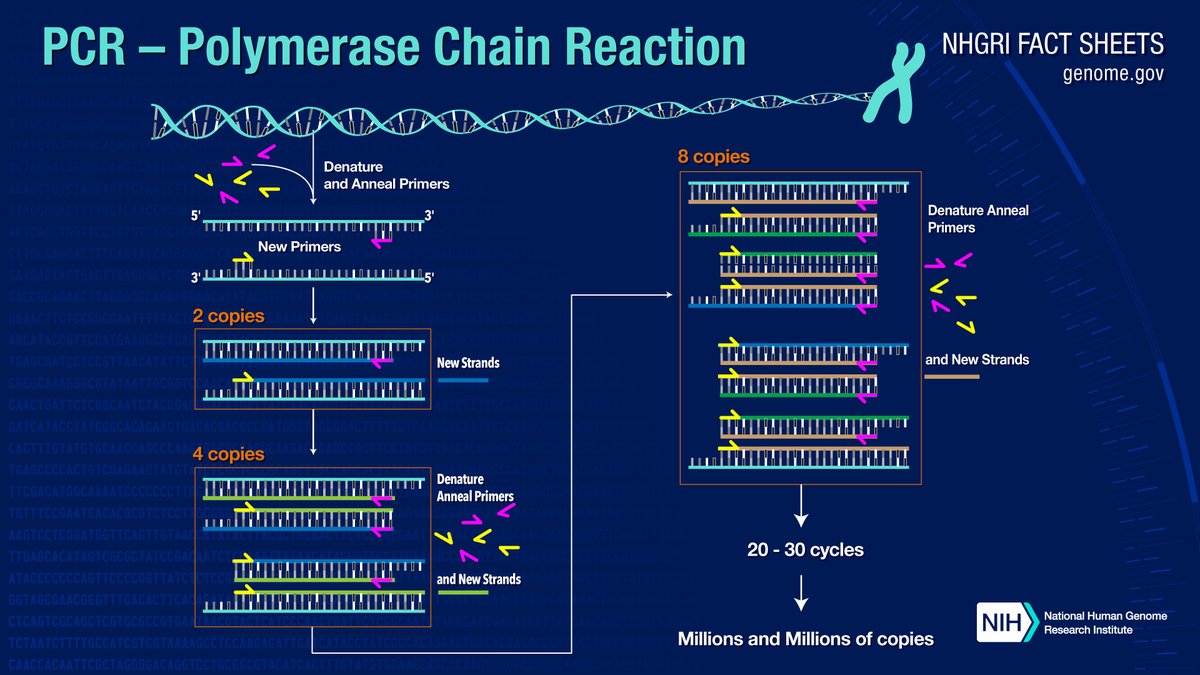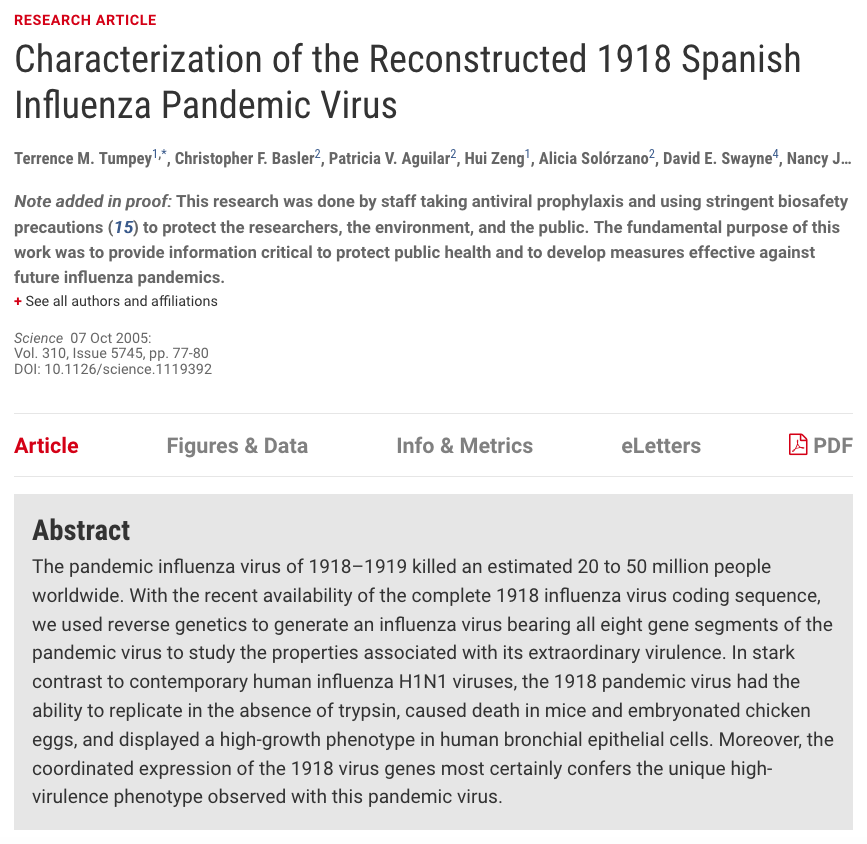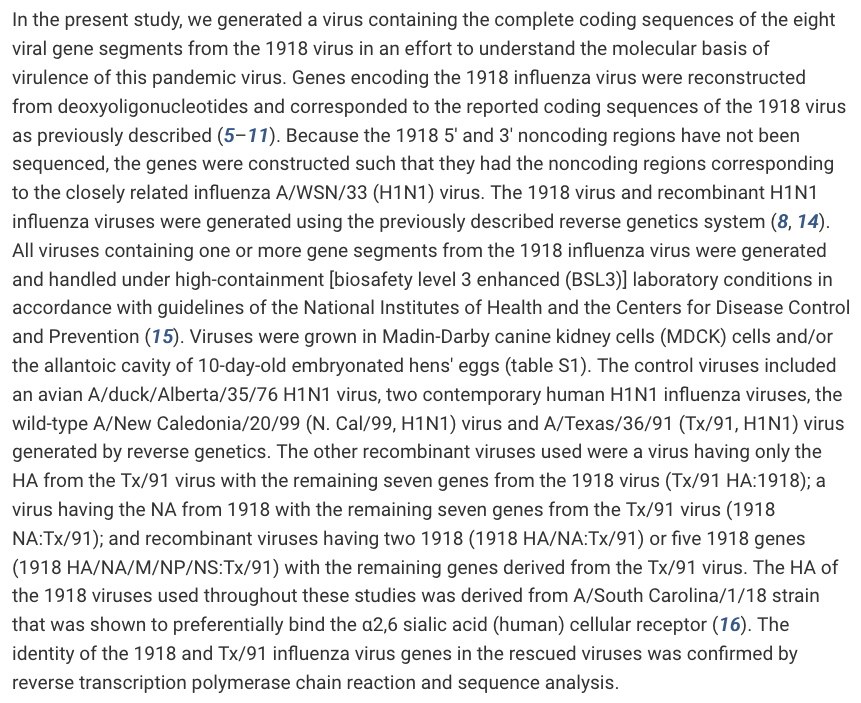Thread: Deconstructing the 1918 “Spanish Flu” Pandemic
1) In this scathing indictment of the outrageously corrupt Centers for Disease Control and Prevention (CDC), I will methodically dismantle the highly dubious official narrative of the deadly influenza pandemic of 1918-20.
1) In this scathing indictment of the outrageously corrupt Centers for Disease Control and Prevention (CDC), I will methodically dismantle the highly dubious official narrative of the deadly influenza pandemic of 1918-20.
2) Since the 1918 “Spanish Flu” pandemic helped set the stage for the modern-day medical establishment, the process of dissecting it will yield valuable insights that can be used to unravel the fraudulent official narrative of COVID-19 that is being peddled today.
3) It turns out that “Spanish Flu” is a complete misnomer, as this particular outbreak was neither Spanish in origin, nor was it a “contagious” flu.
4) Spain was one of the few major European countries to remain neutral during World War I. The Spanish media, unlike that of Allied and Central Powers nations, was free and uncensored. Therefore, they didn’t suppress news of the pandemic, unlike other countries.
5) Other countries with a media blackout could only get detailed, in-depth coverage of the pandemic from Spanish news sources. Hence, many people incorrectly assumed the illness was specific to Spain, and it was dubbed the “Spanish Flu”—much to Spain’s chagrin.
6) Numerous articles and studies indicate that there is “uncertainty” around the 1918 pandemic, and researchers are still “unsure” as to the exact “origin” of the supposed outbreak.
7) According to Sino Biological, the cause of the 1918 influenza pandemic was a “vicious Influenza A virus strain of subtype H1N1.”
https://www.sinobiological.com/research/virus/1918-influenza-pandemic-spanish-flu">https://www.sinobiological.com/research/...
https://www.sinobiological.com/research/virus/1918-influenza-pandemic-spanish-flu">https://www.sinobiological.com/research/...
8) The symptoms were extremely severe and unusual, including “massive hemorrhages and edema in the lung.” The disease was initially misdiagnosed as dengue, cholera, or typhoid. Interestingly, the majority of deaths were caused by a secondary infection of bacterial pneumonia.
9) Sino Biological also indicates that influenza viruses are viral infections of the “respiratory and pulmonary system generally accompanied by fever.”
https://www.sinobiological.com/research/virus/influenza-hemagglutinin-structure">https://www.sinobiological.com/research/...
https://www.sinobiological.com/research/virus/influenza-hemagglutinin-structure">https://www.sinobiological.com/research/...
10) A CDC article published in 2006, entitled “1918 Influenza: the Mother of All Pandemics,” claims that an estimated 500 million people, or roughly one-third of the world’s population, were “infected” by the supposed virus.
https://wwwnc.cdc.gov/eid/article/12/1/05-0979_article">https://wwwnc.cdc.gov/eid/artic...
https://wwwnc.cdc.gov/eid/article/12/1/05-0979_article">https://wwwnc.cdc.gov/eid/artic...
11) The total deaths were estimated to be anywhere from 50 to 100 million.
“All influenza A pandemics since that time, and indeed almost all cases of influenza A worldwide (excepting human infections from avian viruses such as H5N1 and H7N7)…”
“All influenza A pandemics since that time, and indeed almost all cases of influenza A worldwide (excepting human infections from avian viruses such as H5N1 and H7N7)…”
12) “…have been caused by descendants of the 1918 virus, including ‘drifted’ H1N1 viruses and reassorted H2N2 and H3N2 viruses.”
Note that since viruses are not alive, they cannot possibly have descendants.
Note that since viruses are not alive, they cannot possibly have descendants.
13) The article continues: “Subsequent research indicates that descendants of the 1918 virus still persists enzootically in pigs. They probably also circulated continuously in humans, undergoing gradual antigenic drift and causing annual epidemics, until the 1950s.”
14) “With the appearance of a new H2N2 pandemic strain in 1957 (‘Asian flu’), the direct H1N1 viral descendants of the 1918 pandemic strain disappeared from human circulation entirely, although the related lineage persisted enzootically in pigs.”
15) “But in 1977, human H1N1 viruses suddenly ‘reemerged’ from a laboratory freezer (9). They continue to circulate endemically and epidemically.”
16) No proof is given for the far-fetched claim that “descendants” of the 1918 virus still persist “enzootically” in pigs. There cannot be such a thing as “cross-species transmission,” e.g., from animals to humans, simply because animal RNA/DNA is incompatible with human RNA/DNA.
17) Furthermore, no explanation is given for how human H1N1 viruses suddenly “reemerged” from a laboratory freezer in 1977, aside from a link to the article below—which requires paid access. https://pubmed.ncbi.nlm.nih.gov/82293/ ">https://pubmed.ncbi.nlm.nih.gov/82293/&qu...
18) According to the World Health Organization (WHO), “Seasonal influenza is characterized by a sudden onset of fever, cough (usually dry), headache, muscle and joint pain, severe malaise (feeling unwell), sore throat and a runny nose.”
https://www.who.int/news-room/fact-sheets/detail/influenza-(seasonal)">https://www.who.int/news-room...
https://www.who.int/news-room/fact-sheets/detail/influenza-(seasonal)">https://www.who.int/news-room...
19) The “seasonal” variety of influenza can be potentially fatal for people who are considered “high risk.” This includes children under 5, adults over 65, pregnant women, individuals with chronic medical conditions, and individuals with immunosuppressive conditions.
20) However, the 1918 pandemic affected a totally different demographic than “seasonal” influenza. The CDC article says, “Overall, nearly half of the influenza-related deaths in the 1918 pandemic were in young adults 20–40 years of age, a phenomenon unique to that pandemic year.”
21) This is very peculiar, since the article also claims that the 1918 illness was just a variation of ordinary, “seasonal” influenza. Once again, since viruses are not alive, it is preposterous for the CDC to claim that any virus has “descendants.”
22) A further examination of the literature regarding this pandemic reveals many peculiar inconsistencies, inconsistent narratives, and doublethink. This is compounded by the fact that death records were not consistently archived and saved in many parts of the world at that time.
23) Regardless, there is more than enough available information to form logical conclusions about the true nature of this pandemic, as well as to expose the ridiculous lies and needlessly complicated layers of scientific garbage the CDC, among others, have used to hide the truth.
24) The CDC, at best, can be described as an organization that is horrifically inept at performing its intended function, and at worst, a corrupt and heinous instrument of death—in stark contrast to the overly try-hard and “benevolent” purpose embedded within its ridiculous name.
25) The agency has dedicated a number of pages on its website to describing the 1918 influenza pandemic. It states that the pandemic was “caused by an H1N1 virus with genes of avian origin.”
https://www.cdc.gov/flu/pandemic-resources/1918-pandemic-h1n1.html">https://www.cdc.gov/flu/pande...
https://www.cdc.gov/flu/pandemic-resources/1918-pandemic-h1n1.html">https://www.cdc.gov/flu/pande...
26) Oddly enough, in the very same paragraph, the CDC admits, “Although there is not universal consensus regarding where the virus originated, it spread worldwide during 1918-1919.” Apparently, the virus was first identified in military personnel in the spring of 1918.
27) There were an estimated 675,000 deaths in the United States.
“The high mortality in healthy people, including those in the 20-40 year age group, was a unique feature of this pandemic.”
“The high mortality in healthy people, including those in the 20-40 year age group, was a unique feature of this pandemic.”
28) The CDC inexplicably claims, “While the 1918 H1N1 virus has been synthesized and evaluated, the properties that made it so devastating are not well understood.”
This statement sounds patently absurd.
This statement sounds patently absurd.
29) If the virus has been “synthesized and evaluated,” shouldn’t the properties that made it so “devastating” already be well understood? This is grossly incompetent for such a lavishly funded institution. What exactly does the CDC mean by the words “synthesized” and “evaluated”?
30) There are supposedly four different kinds of influenza viruses classified as types A, B, C, and D. According to the CDC, “Influenza A viruses are the only influenza viruses known to cause flu pandemics, i.e., global epidemics of flu disease.”
https://www.cdc.gov/flu/about/viruses/types.htm">https://www.cdc.gov/flu/about...
https://www.cdc.gov/flu/about/viruses/types.htm">https://www.cdc.gov/flu/about...
31) “A pandemic can occur when a new and very different influenza A virus emerges that both infects people and has the ability to spread efficiently between people.”
32) The CDC indicates that 131 “subtypes” of the influenza virus exist. The organization follows an internationally accepted virus naming convention that was accepted by the WHO following a major revision in 1979.
https://www.ncbi.nlm.nih.gov/pmc/articles/PMC2395936/pdf/bullwho00427-0070.pdf">https://www.ncbi.nlm.nih.gov/pmc/artic...
https://www.ncbi.nlm.nih.gov/pmc/articles/PMC2395936/pdf/bullwho00427-0070.pdf">https://www.ncbi.nlm.nih.gov/pmc/artic...
33) Just from reading the CDC’s page on influenza viruses, it seems as if the organization finds itself caught in a massive, gruesome, and genocidal lie. It’s remarkable that there isn’t a single actual image of an influenza virus on this particular site—only colorful diagrams.
34) It appears as though the CDC has been slapping layer upon layer of scientific obscurity onto the initial lie until it becomes so layered with abstraction and absurd complexity that the average person is simply unable to grasp it.
35) Influenza A viruses are supposedly divided into subtypes based on two proteins that exist on the surface of the virus: hemagglutinin (HA) and neuraminidase (NA). There are 18 different HA subtypes and 11 different NA subtypes.
37) I cannot emphasize enough just how recklessly stupid and dangerous it is to blindly leave your health and safety in the hands of these so-called “experts,” if for no other reason than the fact that human error is always a very real possibility in any given man-made situation.
38) Don’t forget that medical error is the third-leading cause of death in the United States. These people are not gods—not by a long shot.
39) When you add pervasive, filthy corruption to the mix, the medical establishment becomes a totally backwards, arcane, grotesque, and medieval nightmare of epic proportions—one that you don’t even remotely want to think about wasting any time with, unless absolutely necessary.
40) The CDC indicates that its “studies of the 1918 influenza virus were begun in 2004 with the initiation of testing of viruses containing subsets of the eight genes of the 1918 virus.”
https://www.cdc.gov/flu/about/qa/1918flupandemic.htm">https://www.cdc.gov/flu/about...
https://www.cdc.gov/flu/about/qa/1918flupandemic.htm">https://www.cdc.gov/flu/about...
41) For whatever reason, the agency waited all the way until 2005 to finally finish “discovering” and “reconstructing” the 1918 influenza virus. That’s 85 years to fully characterize the supposed cause of a devastating pandemic that killed an estimated 50 million or more people.
42) The CDC details the “discovery” and “reconstruction” of the 1918 influenza virus on its website. #discovering">https://www.cdc.gov/flu/pandemic-resources/reconstruction-1918-virus.html #discovering">https://www.cdc.gov/flu/pande...
43) “The virus’ unique severity puzzled researchers for decades, and prompted several questions, such as ‘Why was the 1918 virus so deadly?’, ‘Where did the virus originate from?’, and…”
44) “…‘What can the public health community learn from the 1918 virus to better prepare for and defend against future pandemics?’ These questions drove an expert group of researchers and virus hunters to search for the lost 1918 virus, sequence its genome, recreate the virus…”
45) “…in a highly safe and regulated laboratory setting at CDC, and ultimately study its secrets to better prepare for future pandemics.”
46) “For decades, the 1918 virus was lost to history, a relic of a time when the understanding of infectious pathogens and the tools to study them were still in their infancy.”
47) In 1951, a Swedish microbiologist named Johan Hultin attempted to excavate bodies of Inuit Natives buried at a tiny ocean-side village in Alaska. This village was supposedly ravaged by influenza in the fall of 1918.
48) “The excavation took days…Two days in, Hultin came across the body of a little girl…Ultimately, Hultin successfully obtained lung tissue from four additional bodies buried at the site, but logistical and technological limitations of the time period would prove formidable.”
49) “Hultin attempted to inject the lung tissue into chicken eggs to get the virus to grow. It did not. In the end, perhaps unsurprisingly, Hultin was unable to retrieve the 1918 virus from this initial attempt.”
50) 46 years later, in 1997, Hultin came across the work of Jeffery Taubenberger, a young molecular pathologist employed by the Armed Services Institute of Pathology in Washington, D.C.
51) Taubenberger’s team had completed the “initial work to sequence part of the genome of the 1918 virus.”
52) “Taubenberger’s team successfully extracted RNA of the 1918 virus from lung tissue obtained from a 21-year-old male U.S. service member stationed in Fort Jackson, South Carolina.”
53) “From this tissue, Taubenberger’s group was able to sequence nine fragments of viral RNA from four of the virus’ eight gene segments. This work did not represent a complete sequence of the entire 1918 virus’ genome…”
54) Apparently, upon seeing Taubenberger’s work published in the journal Science, Hultin became “inspired” once again to try and recover the 1918 virus. I wonder where that “inspiration” was during the 46 years since his initial attempt? But I digress.
55) Hultin reached out to Taubenberger and got his agreement to attempt another excavation at the same Alaskan village. This time, Hultin was able to unearth the body of an Inuit woman whose “lungs were perfectly frozen and preserved in the Alaskan permafrost.”
56) “Hultin removed them, placed them in preserving fluid, and later shipped them separately to Taubenberger and his fellow researchers, including Dr. Ann Reid, at the Armed Forces Institute of Pathology.”
57) “Ten days later, Hultin received a call from the scientists to confirm — to perhaps everyone’s collective astonishment — that positive 1918 virus genetic material had indeed been obtained from Lucy’s lung tissue.”  https://abs.twimg.com/emoji/v2/... draggable="false" alt="😂" title="Gesicht mit Freudentränen" aria-label="Emoji: Gesicht mit Freudentränen">
https://abs.twimg.com/emoji/v2/... draggable="false" alt="😂" title="Gesicht mit Freudentränen" aria-label="Emoji: Gesicht mit Freudentränen">
58) Hultin, Taubenberger, et al. described their work in a Proceedings of the National Academy of Sciences (PNAS) paper published in 1999, entitled “Origin and evolution of the 1918 ‘Spanish’ influenza virus hemagglutinin gene.” https://www.pnas.org/content/96/4/1651">https://www.pnas.org/content/9...
59) The article claims, “Pandemic influenza results when an influenza strain emerges with an HA protein to which few people have prior immunity (4). It is thought that the source of HA genes that are new to humans is the extensive pool of influenza viruses infecting wild birds.”
60) “How new HA genes emerge and where they adapt from their characteristic avian form to a form that successfully spreads in humans are not understood perfectly.”
This statement alone calls into question everything reported in this study.
This statement alone calls into question everything reported in this study.
61) The study utilized autopsy cases of 78 victims from the lethal fall wave of influenza that occurred in 1918. However, the authors make an interesting admission in the “Materials and Methods” section of their report.
62) “The majority of individuals died of secondary acute bacterial pneumonia, the most common cause of death in the 1918 pandemic (10); most of the samples taken from these individuals were not analyzed further, because they were extremely unlikely to retain influenza virus...”
63) No explanation is provided for why these samples “were extremely unlikely to retain influenza virus.” The researchers did, however, select 13 samples “from patients who experienced acute influenza deaths after clinical courses of less than 1 week.”
64) “In addition to samples taken from patients with early bronchopneumonia, samples from patients with acute massive pulmonary edema and/or hemorrhage were also selected, reflecting the unusual histopathology observed in 1918 (13).”
65) Note that bronchopneumonia is most commonly associated with a bacterial lung infection.
https://www.medicalnewstoday.com/articles/323167 ">https://www.medicalnewstoday.com/articles/...
https://www.medicalnewstoday.com/articles/323167 ">https://www.medicalnewstoday.com/articles/...
66) According to a 1956 report, acute pulmonary edema is associated with “a great variety of conditions,” including pneumonia and bronchopneumonia.
https://www.ahajournals.org/doi/pdf/10.1161/01.CIR.13.1.113">https://www.ahajournals.org/doi/pdf/1...
https://www.ahajournals.org/doi/pdf/10.1161/01.CIR.13.1.113">https://www.ahajournals.org/doi/pdf/1...
67) Ultimately, it appears the researchers ended up using only three bodies from which to extract the supposed hemagglutinin gene of the influenza A virus. Let’s take a look at the report’s description of each of these bodies.
68) First patient: “During the autopsy, it was noted that he had a fatal secondary lobar bacterial pneumonia in his left lung, whereas the right lung showed only focal acute bronchiolitis and alveolitis, indicative of primary influenza pneumonia.”
69) “Formalin-fixed, paraffin-embedded right lung tissue was positive for influenza RNA [A/South Carolina/1/18 (H1N1)] as reported (2).”
70) Second patient: “The second patient was a 30-year-old male stationed at Camp Upton, NY…The autopsy showed massive bilateral pulmonary edema and focal acute bronchopneumonia. Formalin-fixed, paraffin-embedded lung tissue was positive for influenza RNA...”
71) “RNA templates larger than 150 nucleotides could not be amplified in these two cases.”
72) Third patient: “One of the victims, an Inuit female (age unknown) was influenza RNA positive [A/Brevig Mission/1/18 (H1N1)]. In this case, RNA templates greater than 120 nucleotides could not be amplified.”
73) The researchers used a hocus-pocus technique known as RT-PCR to amplify (copy) RNA templates. However, they were unable to amplify RNA templates larger than 150 nucleotides for the first two patients, and larger than 120 nucleotides for the third patient. Very poor.
74) According to the CDC, the influenza A virus’ genome contains eight gene segments that total in length to ~13,500 nucleotides. This is a far cry from the short RNA templates that were amplified, which calls into question the efficacy of RT-PCR.
https://www.cdc.gov/flu/about/professionals/genetic-characterization.htm">https://www.cdc.gov/flu/about...
https://www.cdc.gov/flu/about/professionals/genetic-characterization.htm">https://www.cdc.gov/flu/about...
75) Here is another key snippet from the report: “Analysis of the 1918 HA sequence permits alternative interpretations as to its origin. The 1918 sequences are phylogenetically distinct from current avian strains.”
This statement is so idiotic that it negates the entire study.
This statement is so idiotic that it negates the entire study.
76) This pretty much tells me all I need to know about the sloppy, patchwork “scientific” techniques used by these researchers. And no, I don’t need to have a PhD in Virology in order to utilize some very basic logic and common sense here.
77) I won’t go into the rest of this shaky and embarrassing paper in detail, but feel free to read through it yourself in order to appreciate just how atrocious the junk science truly is. Nevertheless, let’s take a brief look at how polymerase chain reaction (PCR) works.
78) The description of how PCR works is likely to make your head spin. Again, it doesn’t take a genius to realize how ridiculous it is to use this for detecting a “virus.” https://bio.libretexts.org/Bookshelves/Microbiology/Book%3A_Microbiology_(Boundless)/7%3A_Microbial_Genetics/7.13%3A_Bioinformatics/7.13E%3A_Amplifying_DNA_-_The_Polymerase_Chain_Reaction">https://bio.libretexts.org/Bookshelv...
79) According to Kary Mullis, inventor of the PCR technique, “...the intended use of the PCR was...to apply it as a manufacturing technique...to replicate DNA sequences millions and billions of times...not as a diagnostic tool to detect viruses.”
https://fort-russ.com/2020/06/covid19-pcr-tests-are-scientifically-meaningless/">https://fort-russ.com/2020/06/c...
https://fort-russ.com/2020/06/covid19-pcr-tests-are-scientifically-meaningless/">https://fort-russ.com/2020/06/c...
80) Talk about a massive fraud that invalidates virtually the entire field of virology. Nonetheless, let’s continue with the CDC’s description of its “reconstruction” of this “virus,” which culminates with a 2005 paper published in the journal Science. https://science.sciencemag.org/content/310/5745/77">https://science.sciencemag.org/content/3...
81) We can clearly see the deceptiveness of this deeply flawed research article simply by examining some key passages.
82) “With the recent availability of the complete 1918 influenza virus coding sequence, we used reverse genetics to generate an influenza virus bearing all eight gene segments of the pandemic virus to study the properties associated with its extraordinary virulence.”
83) “Because the 1918 5′ and 3′ noncoding regions have not been sequenced, the genes were constructed such that they had the noncoding regions corresponding to the closely related influenza A/WSN/33 (H1N1) virus.”
84) Note that the preceding statement invalidates the entire study, since it is clear the researchers tried to fill in a missing gap here and simply glossed over this in their final results.

 Read on Twitter
Read on Twitter
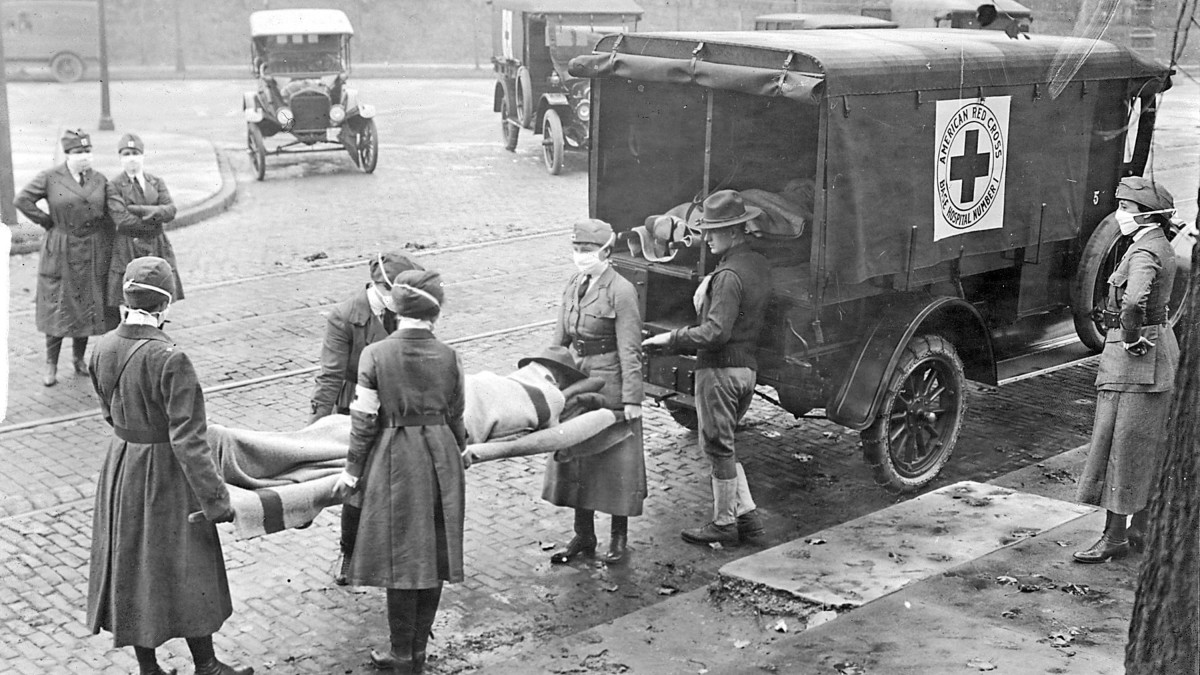


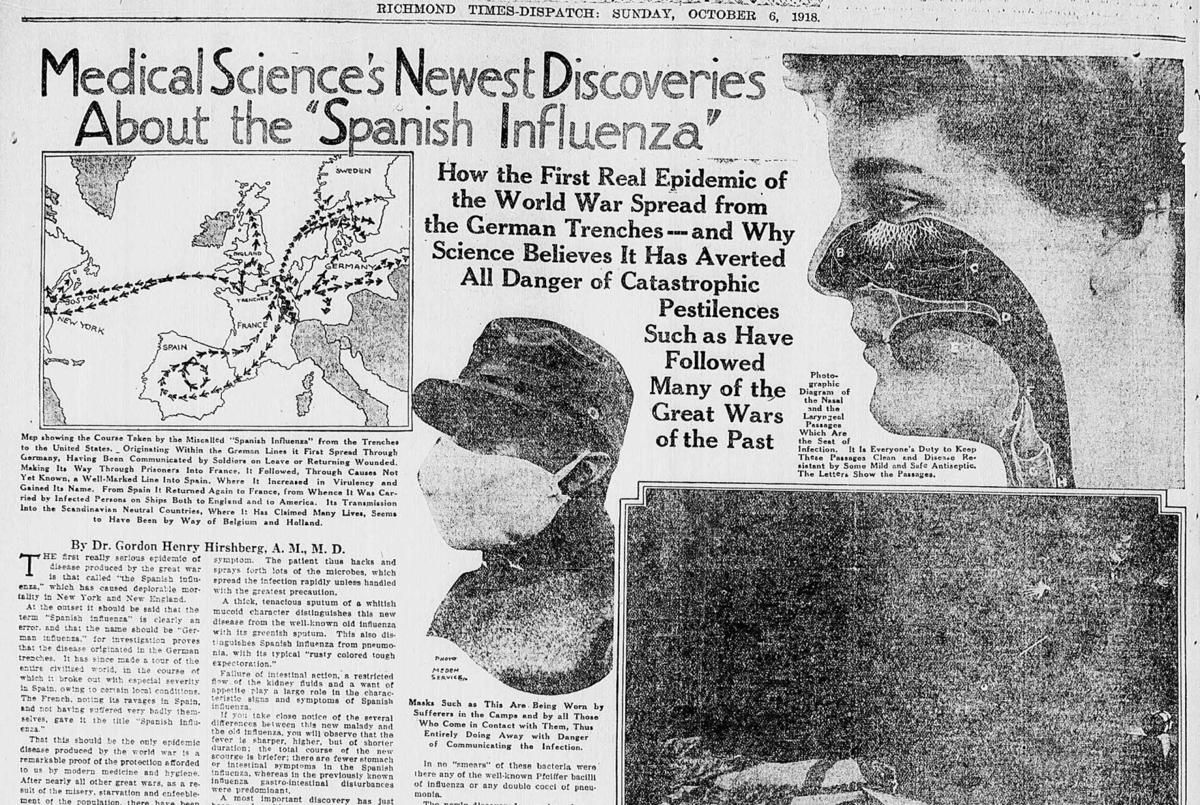


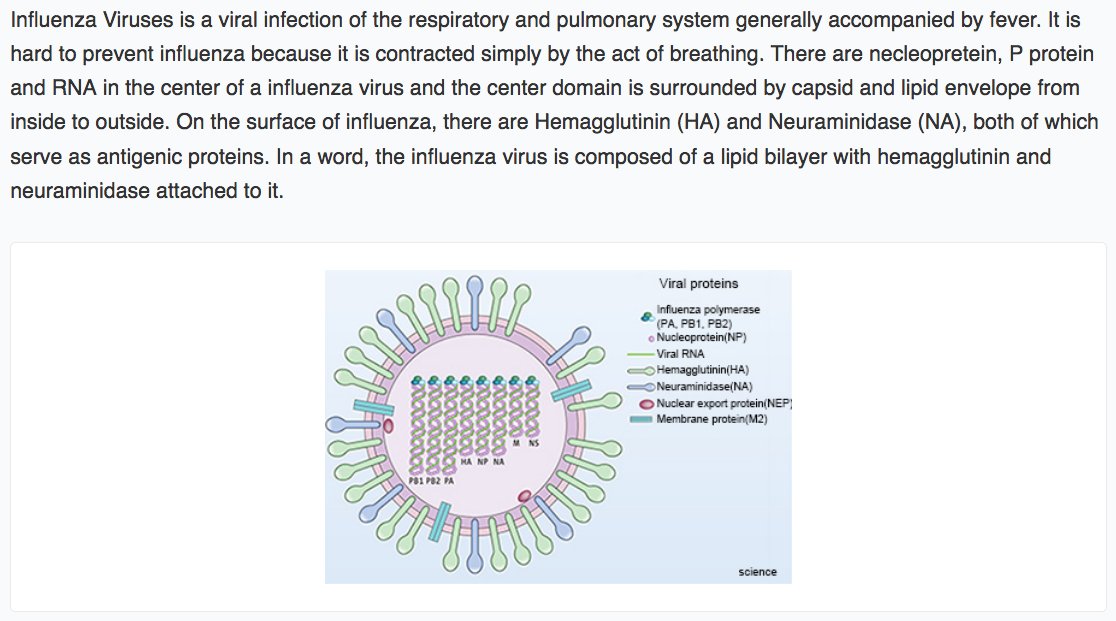

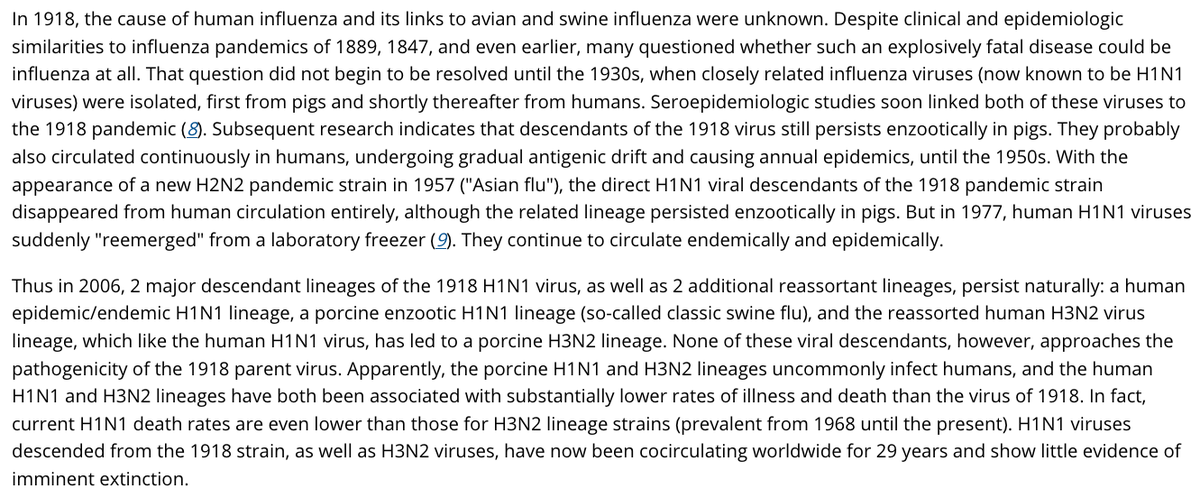
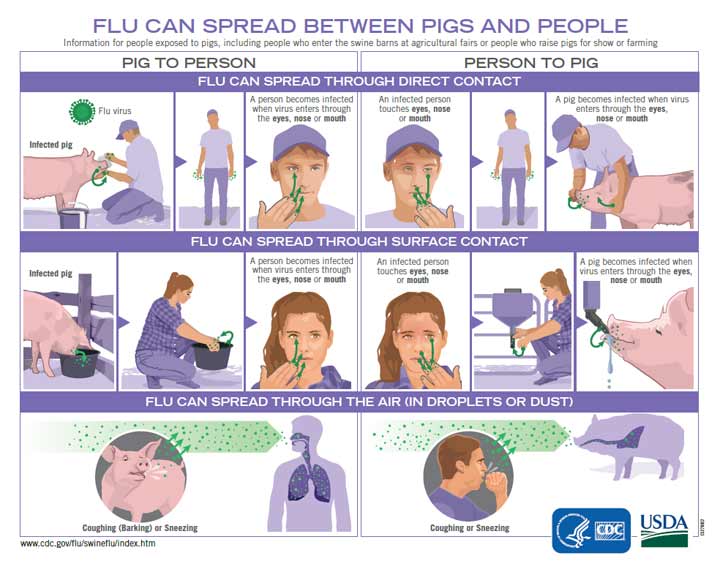
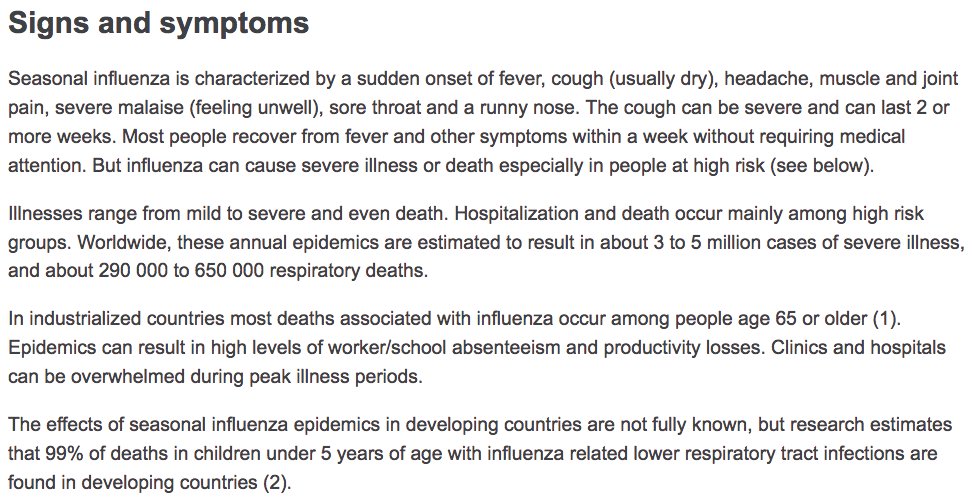
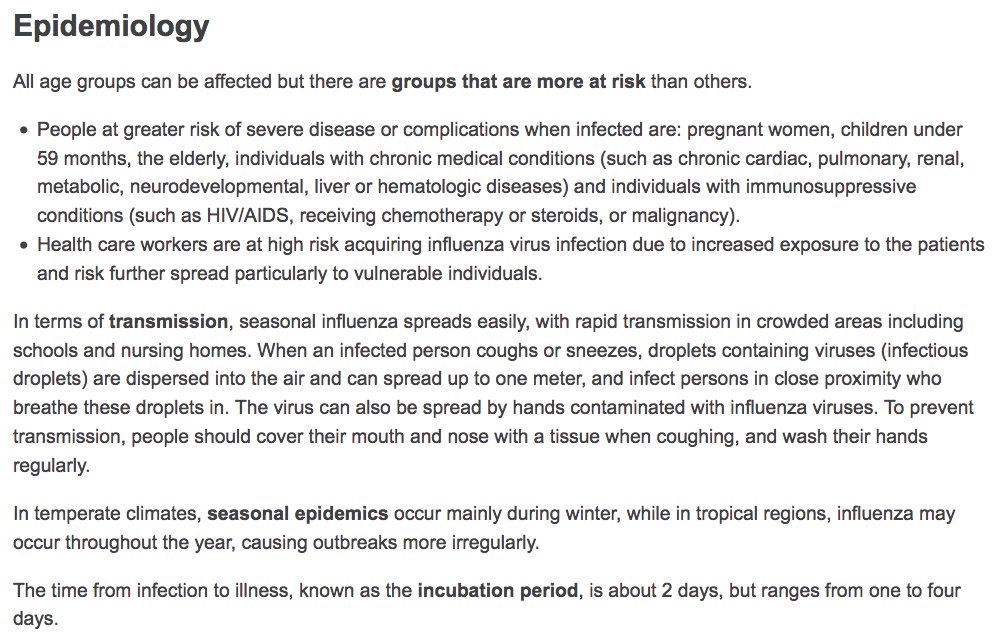

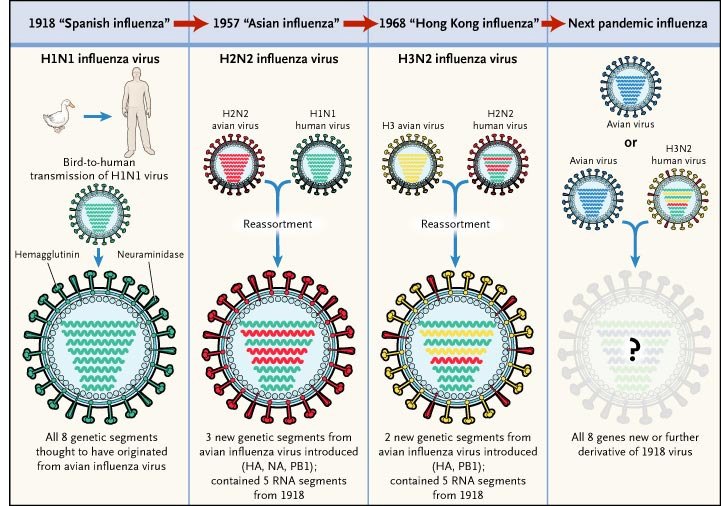



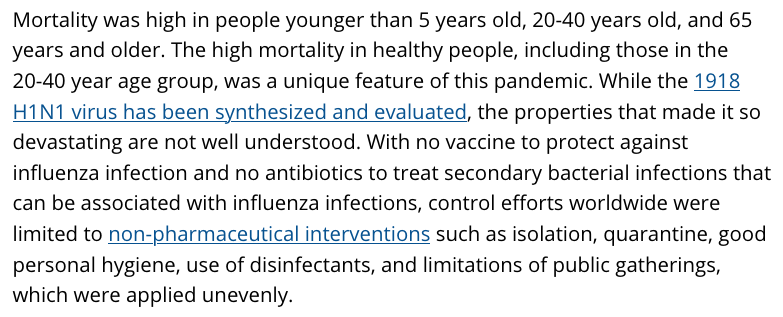


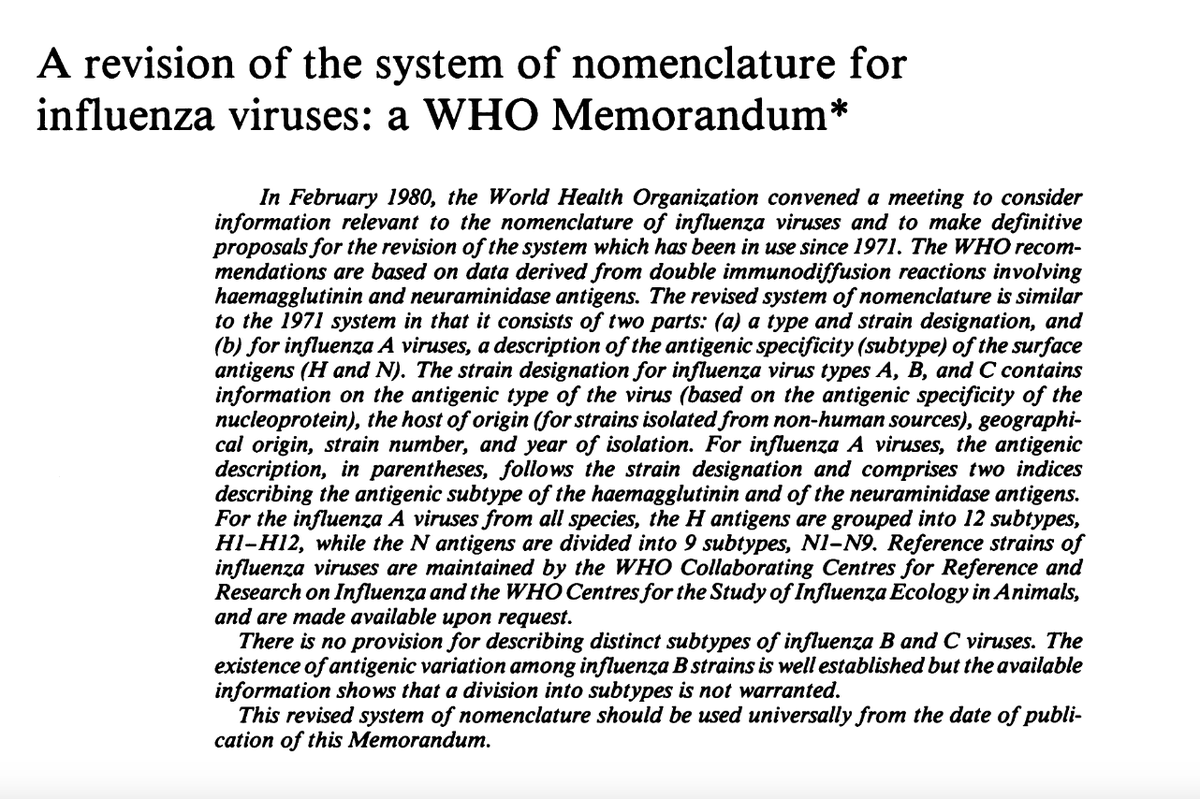

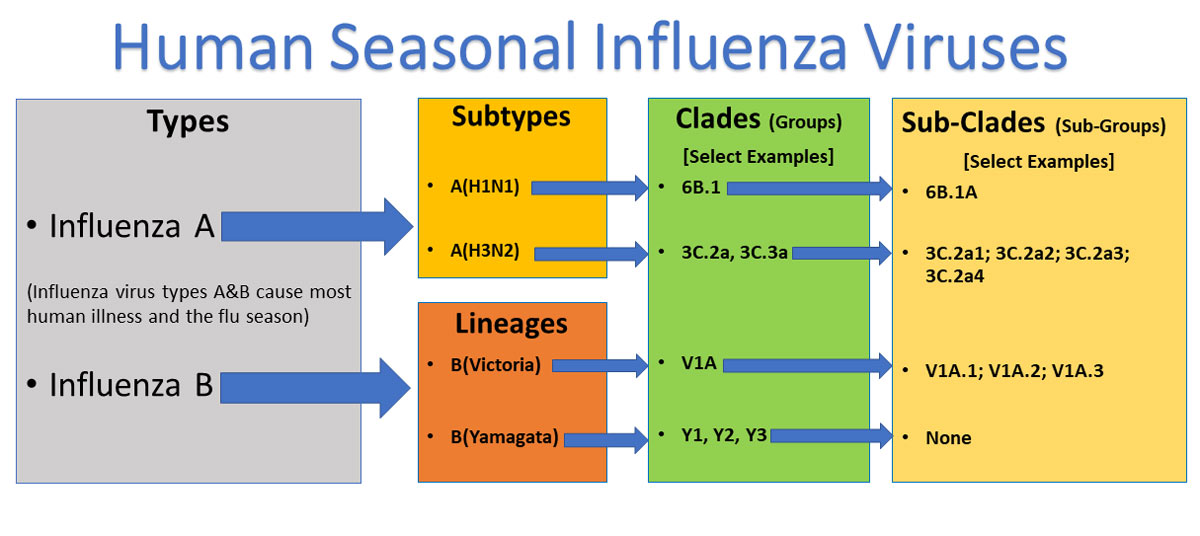
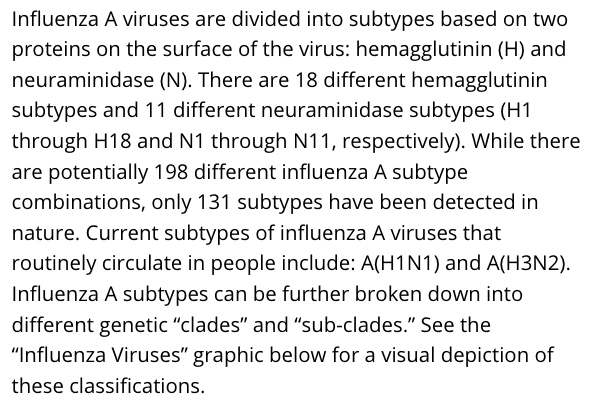

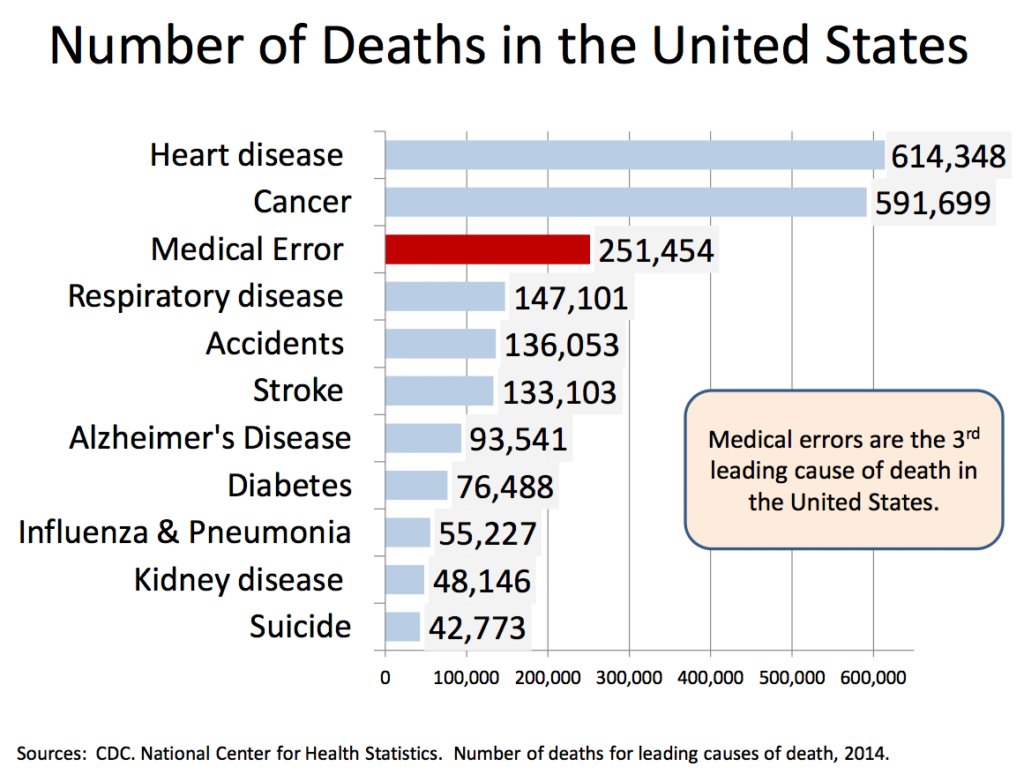


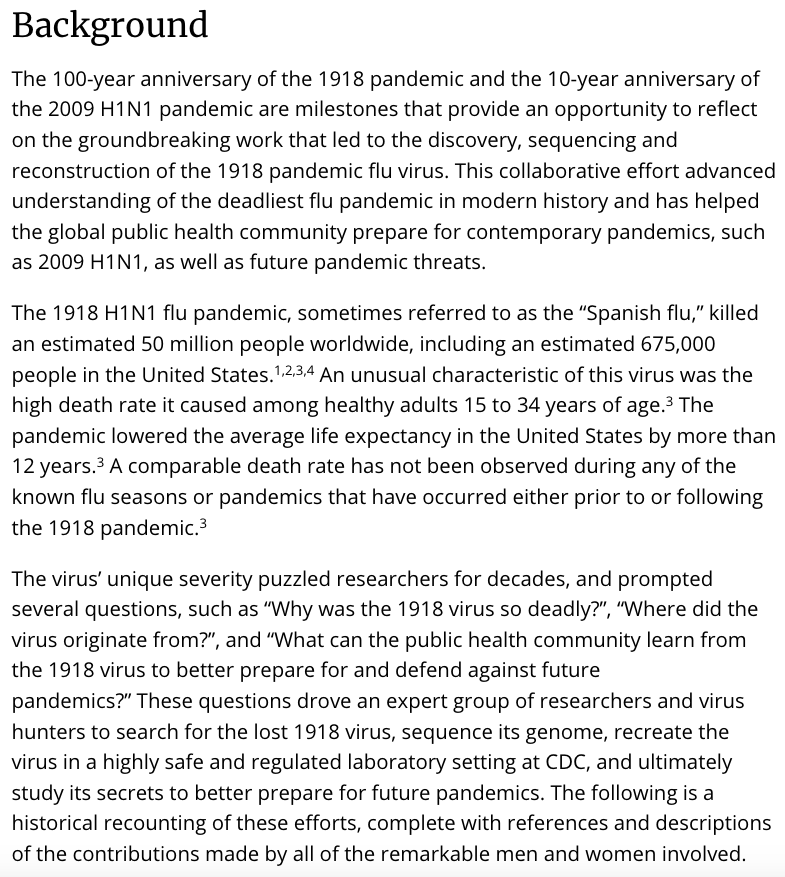
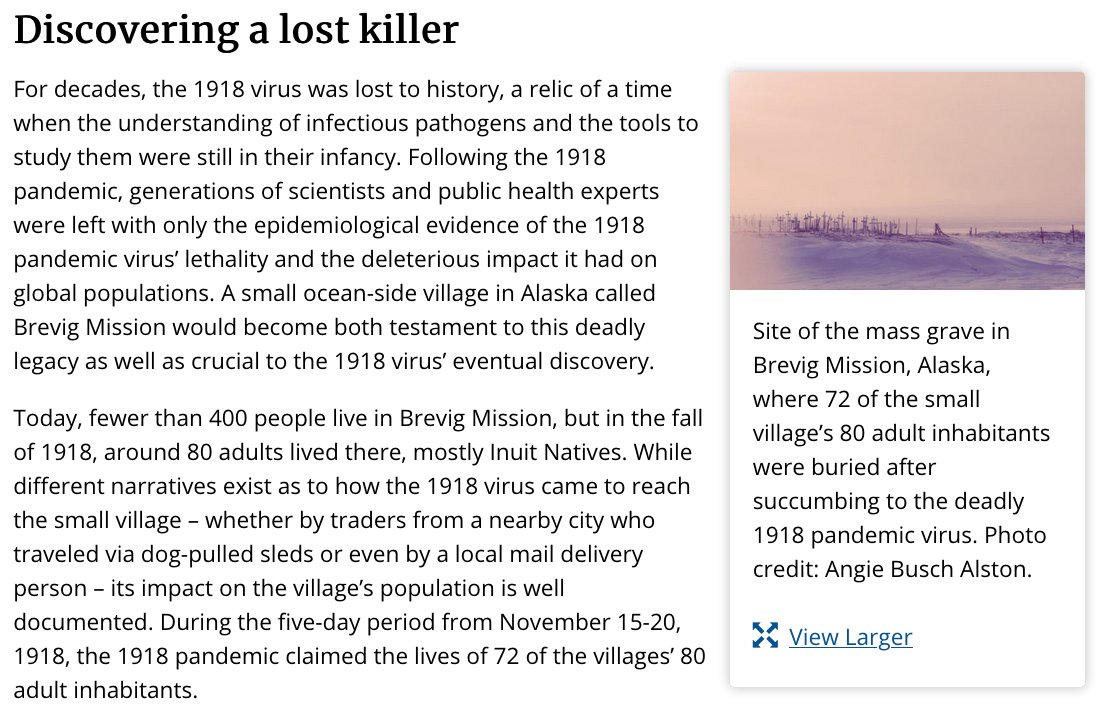


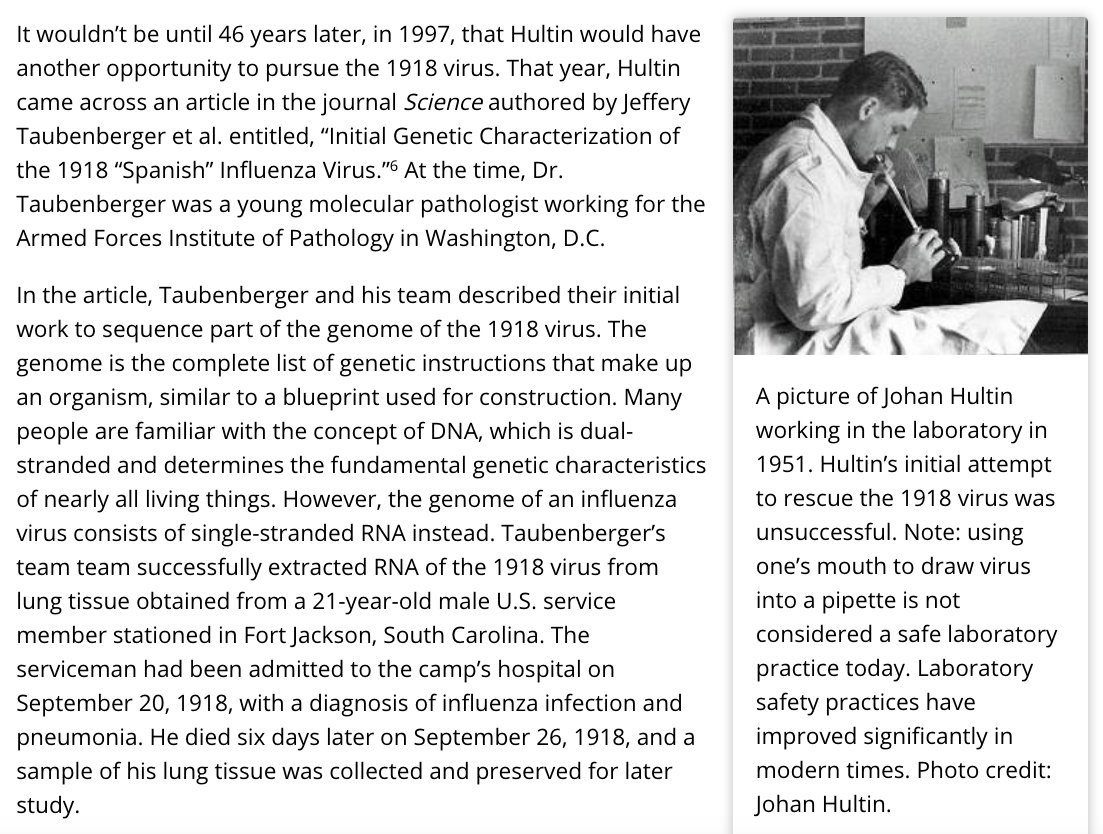
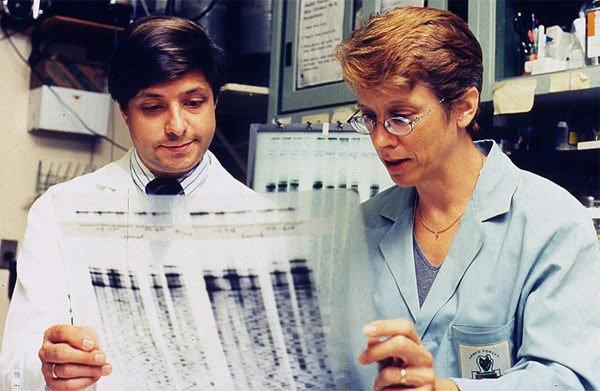
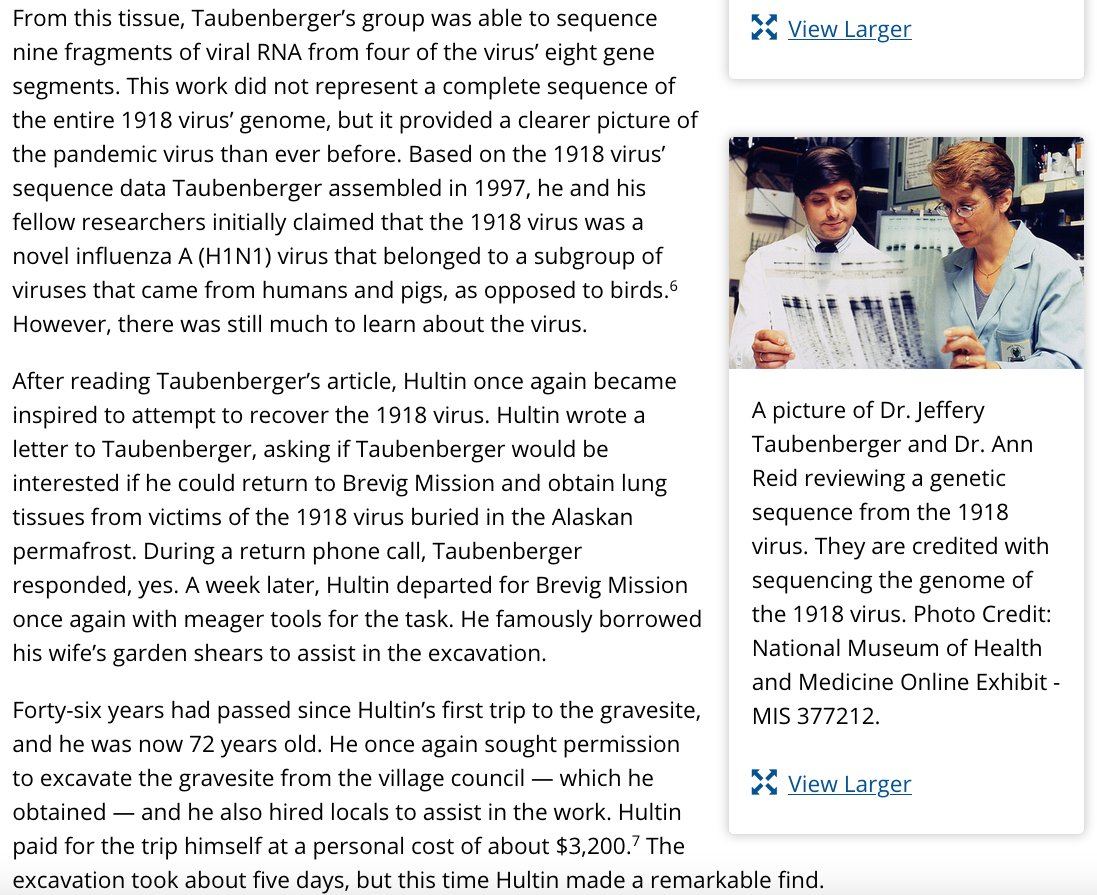
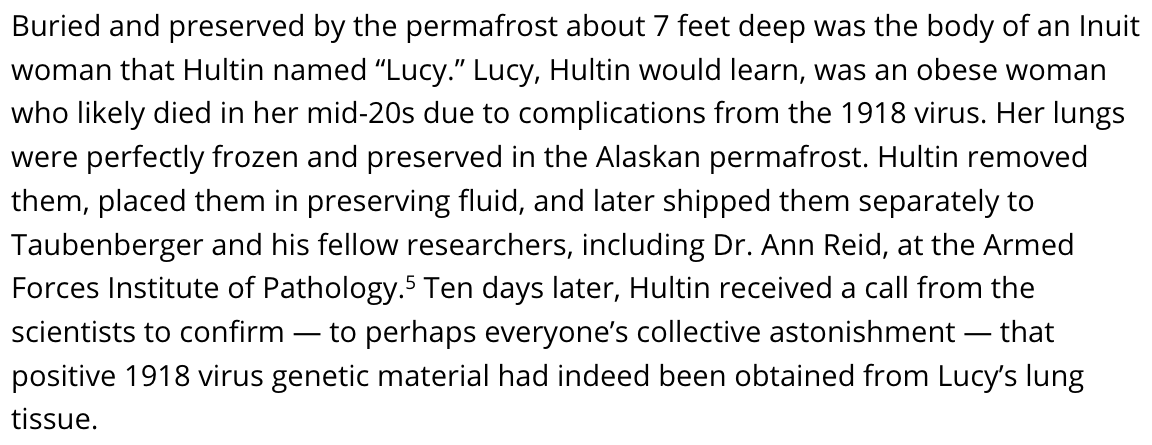
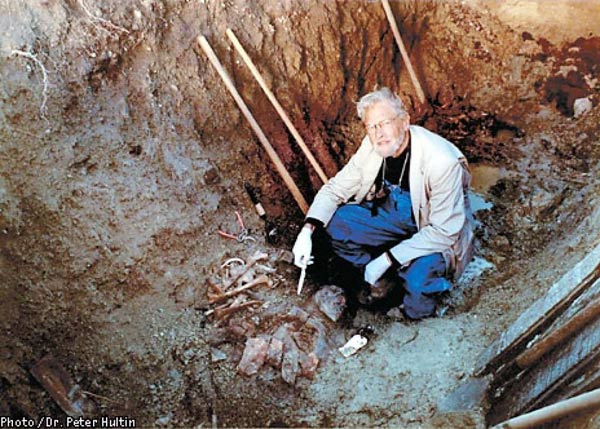
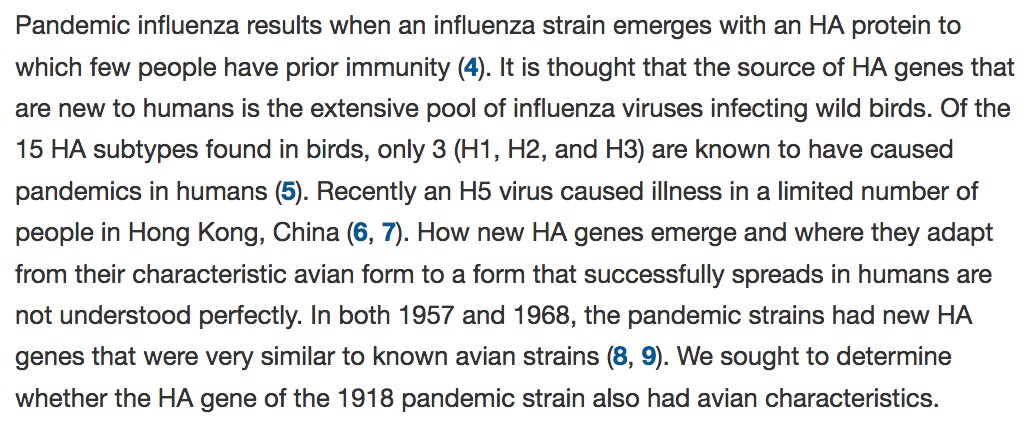

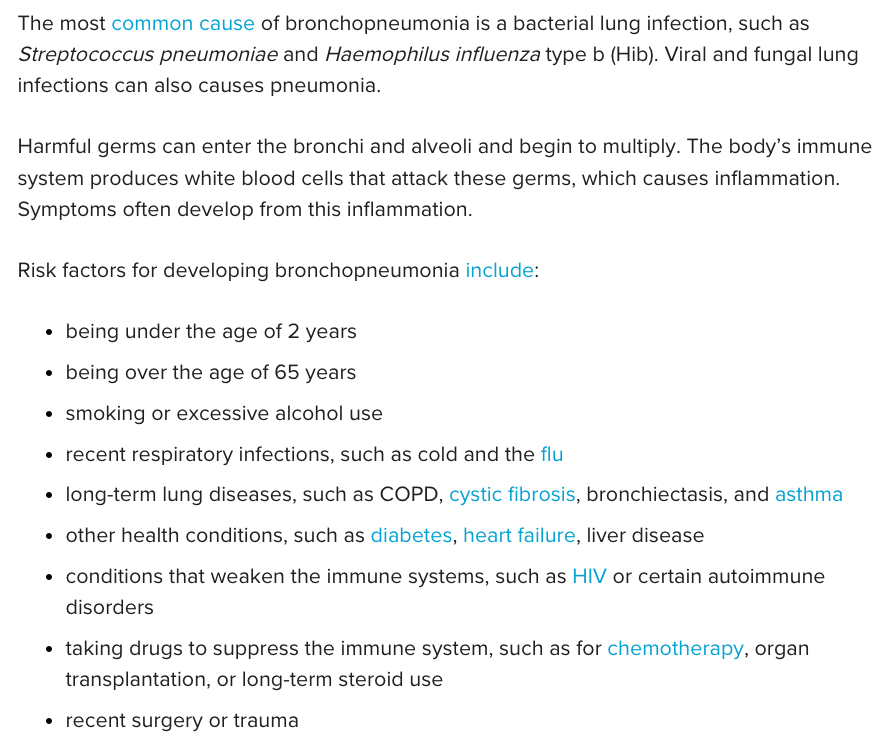

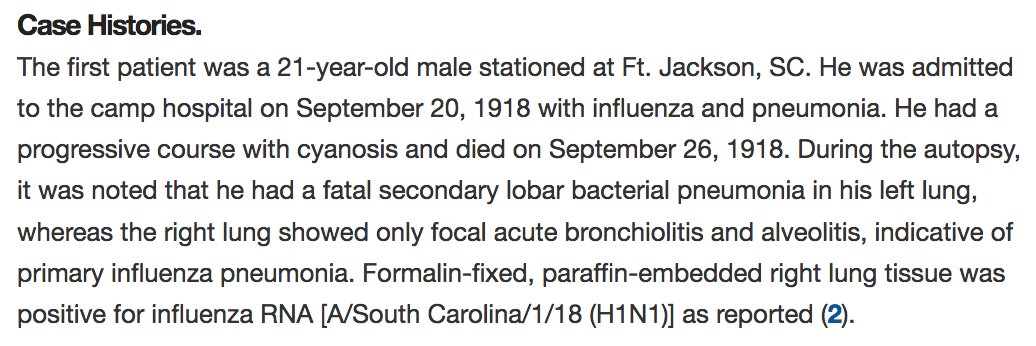

![72) Third patient: “One of the victims, an Inuit female (age unknown) was influenza RNA positive [A/Brevig Mission/1/18 (H1N1)]. In this case, RNA templates greater than 120 nucleotides could not be amplified.” 72) Third patient: “One of the victims, an Inuit female (age unknown) was influenza RNA positive [A/Brevig Mission/1/18 (H1N1)]. In this case, RNA templates greater than 120 nucleotides could not be amplified.”](https://pbs.twimg.com/media/Egrf0s5VoAAzIqA.jpg)
